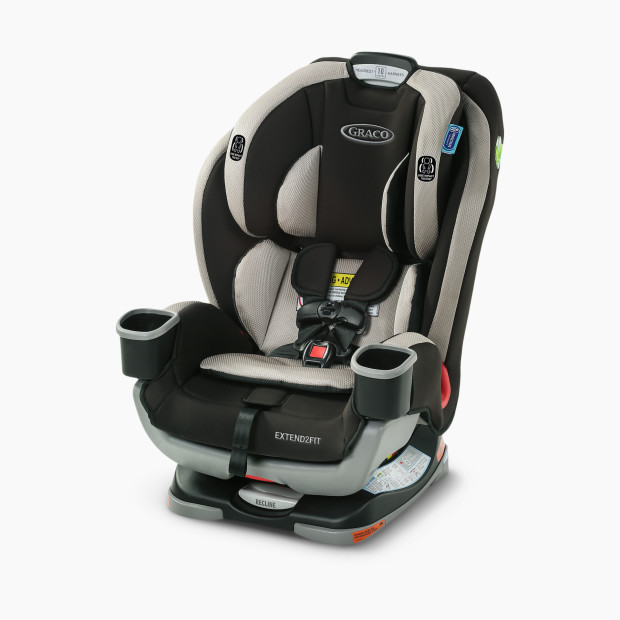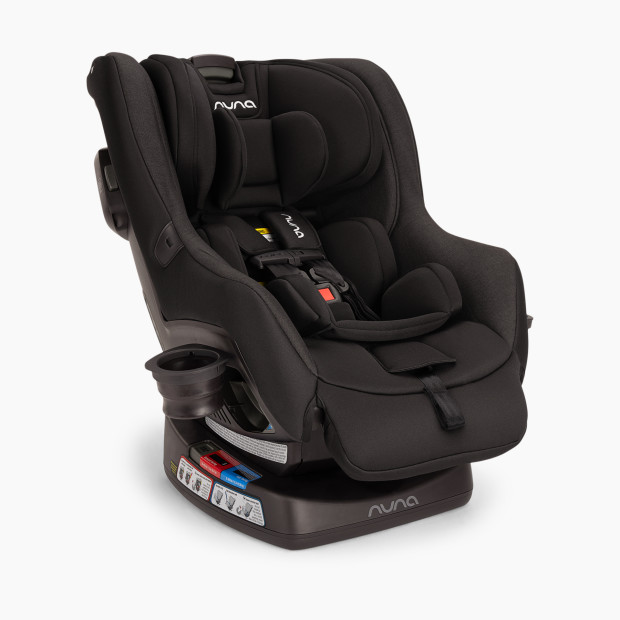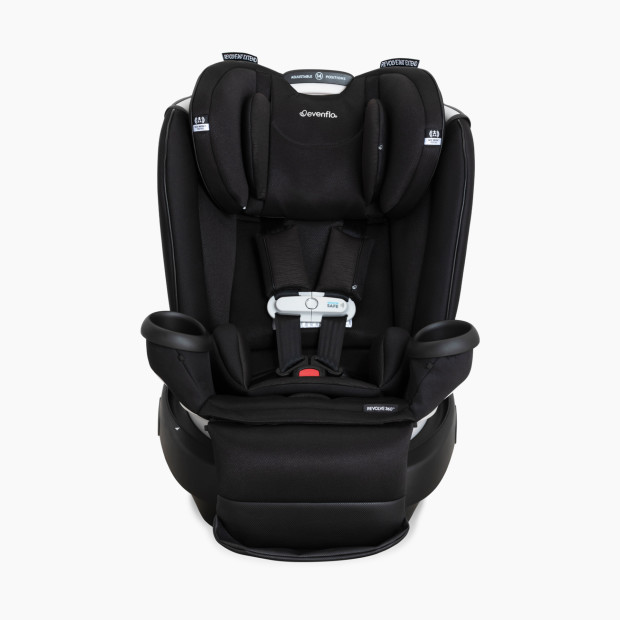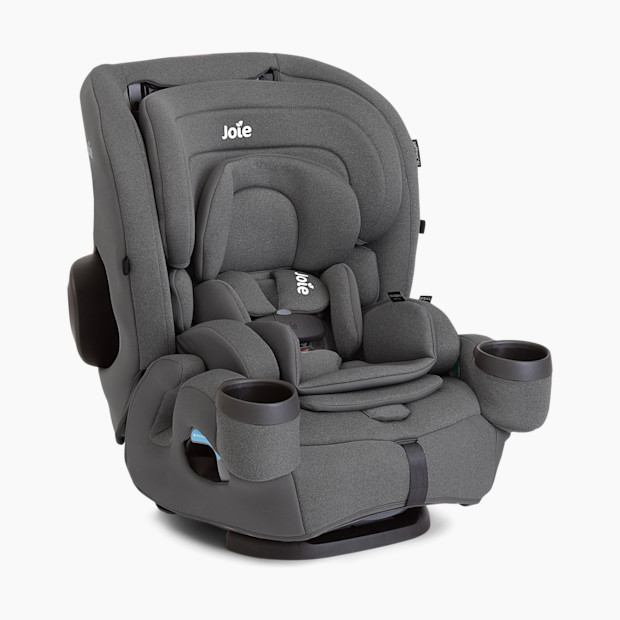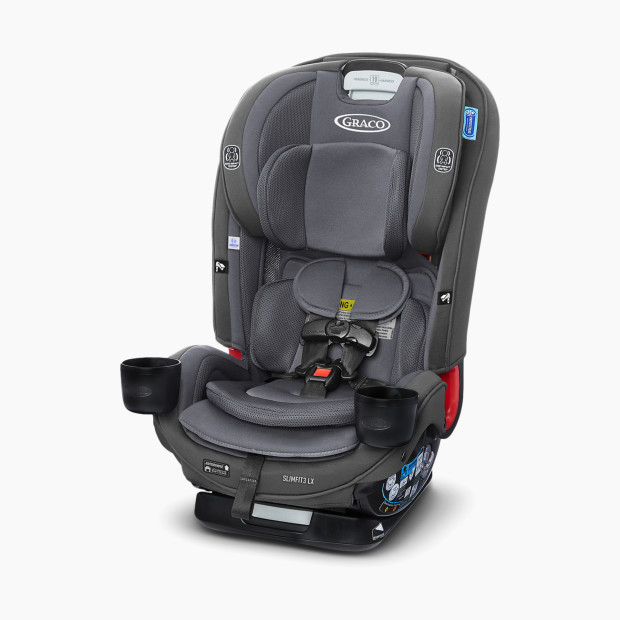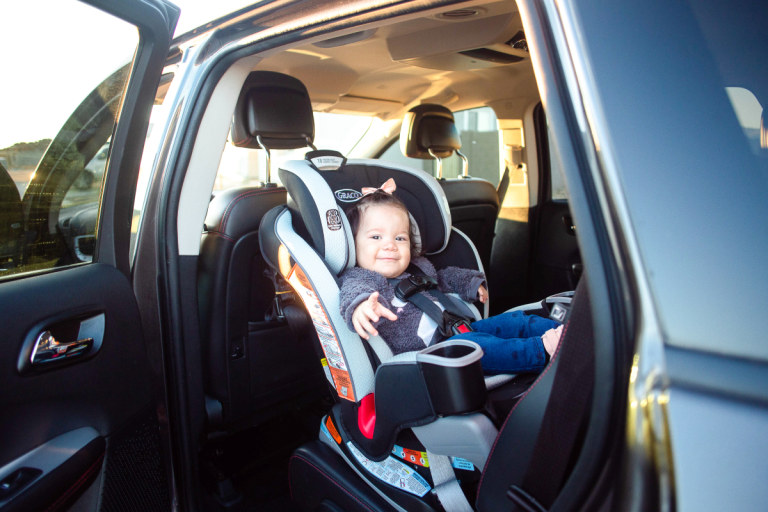
When Do I Switch to a Convertible Car Seat?
Two car seat safety experts share what you need to know about when and how to transition.

By Jen LaBracio, CPST
Fact Checked by Shannon Vestal Robson
In This Article
A car seat is one of the most important pieces of baby gear you’ll own, but keeping the rules and guidelines around car seat safety straight can be daunting.
As a Child Passenger Safety Technician (CPST), I'm specially trained in car seat safety, use and education. One of the most common topics parents ask me about is convertible car seats: what they are, how to use them properly and—most often—when to make the switch from an infant car seat to a convertible.
I teamed up with fellow CPST and founder of The Baby Gear Consultant Rebekah Kimminau to discuss how and when to transition.
Types of Car Seats
A little bit of car seat research can go a long way when you’re trying to figure out when to make the jump from an infant car seat to a convertible.
Infant car seats
Infant car seats, also sometimes called bucket seats or RFOs (rear-facing only seats), are made specifically for infants and younger babies. Infant seats are always rear-facing and can be used from birth until your child maxes out either the height or weight limit of the seat, whichever happens first. While many top-rated infant car seats can have higher limits, most babies outgrow them sometime between about 12 and 18 months, or even sooner if they're particularly tall or heavy. The majority of infant seats click in and out of a base that stays installed in your car, but they can also be installed using a vehicle's seat belt.
Convertible car seats
Convertible car seats can be used with children of various ages and sizes. Convertible car seats can be used from birth in the rear-facing position and switch to forward-facing once your child has outgrown the seat’s rear-facing height or weight limits. Convertible car seats don’t have bases like infant seats; instead, they use your vehicle’s seat belt or LATCH system for installation. (LATCH stands for Lower Anchors and Tethers for Children and is a system designed to make car seat installation simpler and safer.) Convertible seats are generally large and heavy and aren’t designed to be moved regularly between vehicles.
Other types of car seats
All-in-one car seats are convertible car seats that transition from a rear-facing seat to a forward-facing seat and eventually to a booster seat.
Rotating car seats spin on their base to make getting your child in and out of the car easier.
Combination car seats are forward-facing seats that can be used either with a harness or as a booster seat.
When to Switch from an Infant Car Seat to a Convertible
A child can stay in an infant car seat until they outgrow the seat by either the height or weight restrictions.
“Or is the key word to remember here,” says Kimminau. “It means that even if your little one meets the seat’s weight requirement but is over the height requirement, it’s time to make the switch, and vice versa.”
Most children will outgrow their infant seats by height first. “While many infant seats are being marketed to hold children up to two years because of higher weight limits (35 pounds and over),” explains Kimminau, “most children will outgrow their infant seats by height long before they reach the weight limit.”'
You'll also want to pay attention to where the top of your child's head reaches on the back of the seat. For most seats, if the top of a child's head is within one inch of the top of the shell of the seat, it’s time to transition,” she says.
"The easiest way to check this is to find a one-inch-thick board book and place it on top of your child’s head while they are properly secured in the seat," Kimminau suggests.
Can you use a convertible car seat from birth?
Yes, you can use a convertible car seat from birth. You'll have one less item of baby gear to research and buy, and most convertibles will take you from day one well into the preschool years. However, there are some downsides to know if you go this route.
Many convertible car seats don't fit newborns particularly well, especially smaller babies.
You'll lose the convenience of keeping your child in their car seat every time you get in and out of the car. (Think: grocery store runs, pediatrician trips, etc.) You'll also need to think through how you're going to transport them: a newborn-friendly stroller (a stroller that lies completely flat or comes with a bassinet), a baby carrier, etc.
Convertible car seats are large, heavy and generally more time-consuming to install than infant seats. Since they're a lot less portable than infant seats, you'll need a dedicated one in every car you plan on driving with your baby.
How to Choose the Best Convertible Car Seat
If your child is currently in an infant car seat, you should start researching convertible car seats once your child is around six months old. (This isn't a strict rule, though—do what works best for you. Just be sure to give yourself enough time to research and shop around so you're not panic-ordering a seat when you suddenly realize your baby has outgrown their infant seat.)
You can find detailed information on choosing a new seat in our Best Convertible Car Seats guide. Here are the most important features to consider:
Safety. All car seats in the US must meet the same government safety standards. The safest car seat is the one that fits your child, fits your vehicle and can be installed correctly by you every time. Safety extras to keep an eye out for include additional shock absorption, side-impact protection, an anti-rebound bar (a bar that helps halt the rebound of your car seat during a crash and causes the seat to come to a stop sooner) and a stability/load leg (a bar that extends from the car seat to a vehicle’s floor and helps to reduce the amount of force on a car seat and the rebound of the seat in the event of a crash).
Ease of installation. Many car seats can be installed using your vehicle’s seat belt or the LATCH system. (LATCH is easier.) If you’re using LATCH, be sure you’re within the weight limits of your seat’s LATCH restrictions, and remember to switch over to a seat belt install once you exceed them.
Fit. Car seats vary in size and shape, as do cars. Be sure the seat you choose can be installed correctly in your vehicle, fits properly and allows enough room for the driver and other passengers.
Rear-facing weight limit. Research shows that riding rear-facing is safer for babies and children. If possible, always choose a convertible seat that has a high rear-facing height and weight limit so you can extend the opportunity to rear-face for as long as possible.
Fabric. Consider the durability and washability of the fabric of the car seat you choose.
When should you turn baby forward-facing?
You should keep your child rear-facing in their convertible car seat until they reach the top height or weight limit allowed by your car seat’s manufacturer. The American Academy of Pediatrics, the National Highway Traffic Safety Commission and many other top scientists, researchers and physicians all agree on the many benefits of extended rear-facing.
Expert Sources
Babylist content uses high-quality subject matter experts to provide accurate and reliable information to our users. Sources for this story include:
Rebekah Kimminau is a CPST and founder of The Baby Gear Consultant
